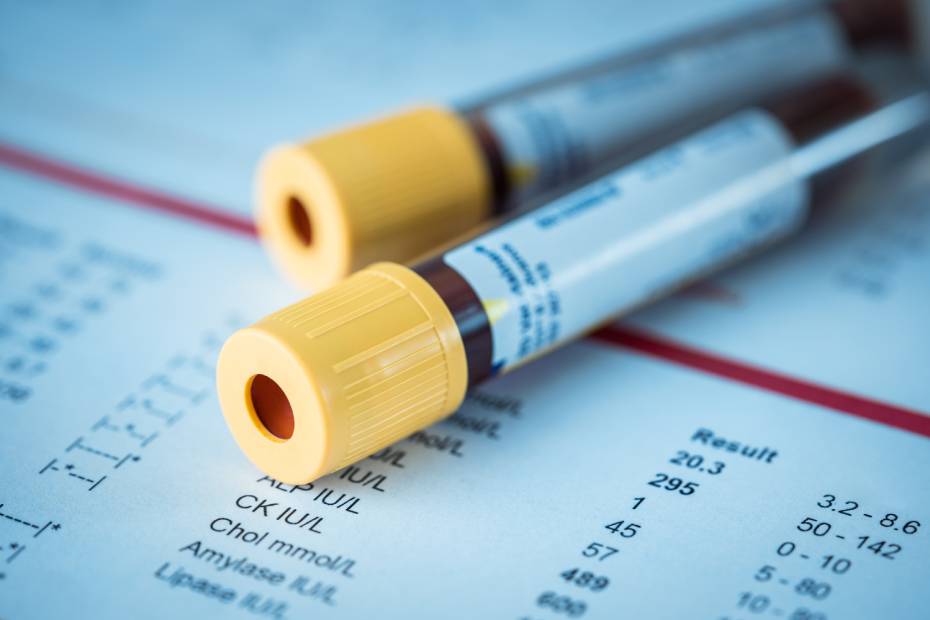Published October 24, 2022 • 6 Min Read
While every medical specialty is unique in its own way, hematology (the science or study of blood, blood components and blood diseases) offers a wide range of career options in both clinical and laboratory areas.
“Hematology is a unique specialty because there’s such a huge spectrum within it,” says Dr. Christopher Hillis, a hematologist, assistant professor and Associate Chief Medical Information Officer at Hamilton Health Sciences. “It’s a part of medical training that people don’t get much exposure to, which makes it interesting and fun to practise.”
What are the different types of hematology?
A hematologist’s work varies through a balance of inpatient and outpatient work and practical aspects, including several procedures.
Key types of hematology include:
- Malignant hematology refers to cancers affecting blood, bone marrow and lymph nodes.
- Benign hematology refers to non-cancerous diagnoses within the body’s red blood cells, white blood cells, platelets or proteins that impact bleeding and clotting.
- Lab hematologists perform routine hematology testing, limited coagulation, and various body fluid testing and analysis.
Most hematologists will also be competent in one or more sub-specialties within the discipline, including:
- Hemato-oncology — acute and chronic leukemia, lymphoma, multiple myeloma)
- Hemostasis/thrombosis — disorders of hemostasis and blood coagulation and management of antithrombotic therapies
- Disorders of blood production and destruction — including bone marrow failure, anemias, and autoimmune blood diseases
- Transfusion medicine (or transfusiology) — transferring blood and blood components
- Pediatric hematology, specializing in infants, children and adolescents
What is a typical day for a hematologist?
This can vary significantly depending on the focus of one’s practice. Hematologists often work on rotation as part of multi-disciplinary teams, so every day will likely differ.
For example, Dr. Hillis is an academic malignant hematologist focusing on a disease called Chronic Lymphocytic Leukemia (CLL), which is a cancer of the blood and bone marrow. He typically spends about one-third of his time in direct patient care, which involves treating patients who react to transfusions or require urgent treatment.
For 10 weeks of the year, he also looks after the Hamilton Hospital’s inpatient unit, which cares for people with all spectrums of malignant hematologic conditions. “This is my time to dig into clinical work, which I really enjoy,” says Dr. Hillis. In addition, he also provides after-hour call coverage for in-patients, works on improving the electronic medical record, and performs research grant writing.
How is the work-life balance for hematologists?
Like with most medical specialties, the demands of the job can have an impact on work-life balance. “On a clinical inpatient week, maintaining that balance is really hard,” says Dr. Hillis. “I’m not getting home on time. It’s a busy time because you have to look after your outpatient practice by keeping your administrative responsibilities while also looking after patients.”
Dr. Hillis says medical students should consider work-life balance from the outset, particularly those that have or want to start a family.
“As you get on in your training, don’t forget about your partner and what’s important for their career and life,” he says. “You have to decide where your support network is so you can be successful.”
What jobs are available for hematologists?
The job market “ebbs and flows,” says Dr. Hillis. That’s because, depending on your province, the government controls the number of positions available for malignant and laboratory hematology. This means the government needs to designate a spot and a salary before a position can become available.
“In the current market, there are definitely more jobs than people to fill them. But they could all fill up, and then that could change,” he says.
On the other hand, benign hematology is often paid by fee-for-service in combination with a lab salary. Due to the nature of the work, which includes diagnostics and outpatient treatment, hematologists will need some affiliation with a hospital.
“Hospitals often need consultants to see in-patients. There are way more benign jobs than people to fill them, and that will always be the case,” says Dr. Hillis.
What should students look for in a hematology program in Canada?
“There isn’t a bad program in Canada; they’re all wonderful and a really nice community of physicians and hematologists,” says Dr. Hillis.
He suggests choosing a program based on the practice style that interests you and the size and type of community you’d like to work in.
“If you want to end up in a community where you’re working as a generalist, it would be helpful to train in a program with more generalists. You’ll have role models. You’ll learn how they manage their practice and how to keep up to date on various diseases,” says Dr. Hillis. “There are also world-leading research and clinical centres in Canada, so you may want to go there and meet people and get a head start in your career that way.”
What are the biggest challenges in hematology?
A lot goes on behind the scenes in medicine, and hematology is no different.
“There are the things they don’t tell you about in medical school, like insurance forms, drug access barriers, advocating with hospitals for timely access to diagnostics … that part of the job is not enjoyable because it’s paperwork. It’s not interacting with people.” During your medical training, Dr. Hillis suggests asking your colleagues for tips and advice to keep on track of administrative duties to ensure you can be successful in all aspects of your work.
What’s the best part about the job?
“Hematology allows you to have a longitudinal relationship with patients because we treat chronic diseases,” says Dr. Hillis. “I treat diseases where there are patients who, if I do my job right and if they’re young enough, will hopefully still be around after I retire. For some people, that may not be what they’re looking for, but for others, it’s a big draw to the specialty. You may not see patients every month, but these are patients that you’ll be seeing for your whole career.”
Additional resources:
- The Royal College of Physicians and Surgeons of Canada – Hematology Pathology Information
- CMA: Hematology Profile
- The Canadian Hematology Society
Related stories:
- Choosing Your Medical Specialty: Emergency Medicine [Podcast]
- Choosing Your Medical Specialty: Plastic and Reconstructive Surgery
This article is intended as general information only and is not to be relied upon as constituting legal, financial or other professional advice. A professional advisor should be consulted regarding your specific situation. Information presented is believed to be factual and up-to-date but we do not guarantee its accuracy and it should not be regarded as a complete analysis of the subjects discussed. All expressions of opinion reflect the judgment of the authors as of the date of publication and are subject to change. No endorsement of any third parties or their advice, opinions, information, products or services is expressly given or implied by Royal Bank of Canada or any of its affiliates.
Share This Article






